 The seventh episode of ABC’s science fiction anthology series, Tales Of Tomorrow, air on ABC, with each episode’s opening titles proclaiming that the series is produced “in cooperation with the Science-Fiction League of America”, a collective of sci-fi writers including Isaac Asimov and Theodore Sturgeon among its members. This episode, based on a story by Charles Sheckley, no longer remains in the archives and may be lost.
The seventh episode of ABC’s science fiction anthology series, Tales Of Tomorrow, air on ABC, with each episode’s opening titles proclaiming that the series is produced “in cooperation with the Science-Fiction League of America”, a collective of sci-fi writers including Isaac Asimov and Theodore Sturgeon among its members. This episode, based on a story by Charles Sheckley, no longer remains in the archives and may be lost.
This series is not yet chronicled in the LogBook. You could join theLogBook team and write this guide or support the webmaster’s efforts to expand the site.

 The first episode of H.G. Wells’ The Invisible Man, based on Wells’ story, premieres on ITV; the series will be shown later in the U.S. on CBS. Lisa Daniely and Deborah Watling (Doctor Who) star.
The first episode of H.G. Wells’ The Invisible Man, based on Wells’ story, premieres on ITV; the series will be shown later in the U.S. on CBS. Lisa Daniely and Deborah Watling (Doctor Who) star. The 38th and final episode of the science fiction drama series Men Into Space airs on CBS, starring William Lundigan.
The 38th and final episode of the science fiction drama series Men Into Space airs on CBS, starring William Lundigan. NBC premieres
NBC premieres  The first episode of Irwin Allen’s adventure series Voyage To The Bottom Of The Sea premieres on ABC, starring Richard Basehart and David Hedison, based on Allen’s 1961 movie of the same name. Eddie Albert guest stars in the series pilot, which was filmed in color, though the first season proper will be produced in black & white, and the pilot is broadcast in black & white as well.
The first episode of Irwin Allen’s adventure series Voyage To The Bottom Of The Sea premieres on ABC, starring Richard Basehart and David Hedison, based on Allen’s 1961 movie of the same name. Eddie Albert guest stars in the series pilot, which was filmed in color, though the first season proper will be produced in black & white, and the pilot is broadcast in black & white as well.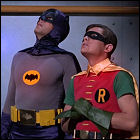 The
The  The 30th episode of Irwin Allen’s science fiction series Lost In Space premieres on CBS, starring Guy Williams, June Lockhart, and Jonathan Harris. This is the beginning of Lost In Space’s second season, and is the first episode of the series to be broadcast in color. Strother Martin guest stars.
The 30th episode of Irwin Allen’s science fiction series Lost In Space premieres on CBS, starring Guy Williams, June Lockhart, and Jonathan Harris. This is the beginning of Lost In Space’s second season, and is the first episode of the series to be broadcast in color. Strother Martin guest stars. ABC premieres the first episode of the Filmation animated series Fantastic Voyage, based on the
ABC premieres the first episode of the Filmation animated series Fantastic Voyage, based on the  The
The  Astronomer Charles Kowal discovers Leda, a tiny, previously undiscovered moon of Jupiter, using Mount Palomar Observatory’s telescope. With a radius of less than seven miles and an inclined orbit, Leda is the first Jovian moon discovered in over two decades, and is among the last to be discovered using ground-based telescopes in the 20th century.
Astronomer Charles Kowal discovers Leda, a tiny, previously undiscovered moon of Jupiter, using Mount Palomar Observatory’s telescope. With a radius of less than seven miles and an inclined orbit, Leda is the first Jovian moon discovered in over two decades, and is among the last to be discovered using ground-based telescopes in the 20th century.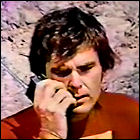 The
The 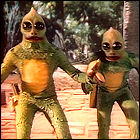 The
The  The
The  The 36th episode of The Six Million Dollar Man is broadcast on ABC, starring Lee Majors and Richard Anderson. Lindsay Wagner guest stars in the third season premiere; Martin E. Brooks joins the cast, taking over the role of Dr. Rudy Wells.
The 36th episode of The Six Million Dollar Man is broadcast on ABC, starring Lee Majors and Richard Anderson. Lindsay Wagner guest stars in the third season premiere; Martin E. Brooks joins the cast, taking over the role of Dr. Rudy Wells. The
The 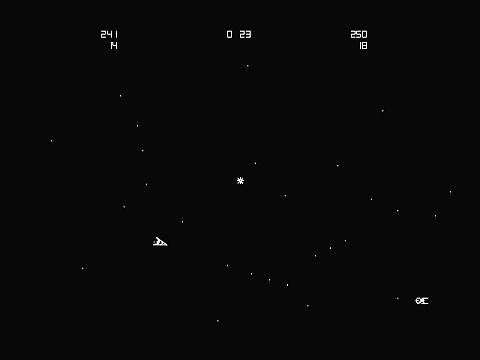 Cinematronics introduces the first vector graphics arcade game,
Cinematronics introduces the first vector graphics arcade game,  The
The  ABC broadcasts the
ABC broadcasts the  The
The  Completely unrelated to the brief series of toys released by Galoob durign the show’s first season, Playmates Toys begins to release a larger-scale series of action figures based on Star Trek: The Next Generation in late 1992, as the series’ sixth season is launched (and has become a TV favorite). The
Completely unrelated to the brief series of toys released by Galoob durign the show’s first season, Playmates Toys begins to release a larger-scale series of action figures based on Star Trek: The Next Generation in late 1992, as the series’ sixth season is launched (and has become a TV favorite). The 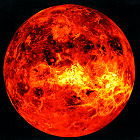 NASA’s unmanned Magellan space probe, having completed three extensive campaigns of mapping the surface of Venus from orbit with cloud-penetrating radar, begins a fourth mission phase, this time sending constant engineering telemetry to Earth, where measurements of Doppler shift in the signal received allows Earthbound scientists to map the gravitational field of Venus. Magellan’s map-making days are over, having achieved a 98% complete map of the cloud-shrouded planet that it has been orbiting since 1990.
NASA’s unmanned Magellan space probe, having completed three extensive campaigns of mapping the surface of Venus from orbit with cloud-penetrating radar, begins a fourth mission phase, this time sending constant engineering telemetry to Earth, where measurements of Doppler shift in the signal received allows Earthbound scientists to map the gravitational field of Venus. Magellan’s map-making days are over, having achieved a 98% complete map of the cloud-shrouded planet that it has been orbiting since 1990. The fifth episode of the Sci-Fi Channel original series Welcome To Paradox airs, a loosely-connected anthology of science fiction stories set in Betaville, a utopian future city whose incredible technology has frequently unintended side-effects. Samantha Ferris (The 4400) and Megan Leitch (The X-Files) star in a story based on the work of author “James Tiptree Jr.” (the pseudonym of late SF author Alice Bradley Sheldon).
The fifth episode of the Sci-Fi Channel original series Welcome To Paradox airs, a loosely-connected anthology of science fiction stories set in Betaville, a utopian future city whose incredible technology has frequently unintended side-effects. Samantha Ferris (The 4400) and Megan Leitch (The X-Files) star in a story based on the work of author “James Tiptree Jr.” (the pseudonym of late SF author Alice Bradley Sheldon).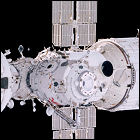 Russia launches the Pirs docking module into orbit, where automatic systems allow it to rendezvous with the International Space Station for docking to the existing Zvezda module. The Pirs module adds a docking port for Soyuz capsules, as well as an airlock for future spacewalks.
Russia launches the Pirs docking module into orbit, where automatic systems allow it to rendezvous with the International Space Station for docking to the existing Zvezda module. The Pirs module adds a docking port for Soyuz capsules, as well as an airlock for future spacewalks. The
The  The Japanese space agency, JAXA, launches the unmanned SELENE (Selenological and Engineering Explorer) spacecraft to orbit Earth’s moon. SELENE is nicknamed Kaguya after a princess of the moon from Japanese folklore. Kaguya is scheduled to enter a polar lunar orbit in October, where it will conduct experiments in spectography, radio science, and charged particle and gamma ray detection. Though Kaguya has an on-board camera to map lunar terrain, the views for which it will become most famous will be shot by two HDTV cameras supplied by Japanese television network NHK, providing spectacular views of the lunar surface as they would be seen by an orbiting explorer.
The Japanese space agency, JAXA, launches the unmanned SELENE (Selenological and Engineering Explorer) spacecraft to orbit Earth’s moon. SELENE is nicknamed Kaguya after a princess of the moon from Japanese folklore. Kaguya is scheduled to enter a polar lunar orbit in October, where it will conduct experiments in spectography, radio science, and charged particle and gamma ray detection. Though Kaguya has an on-board camera to map lunar terrain, the views for which it will become most famous will be shot by two HDTV cameras supplied by Japanese television network NHK, providing spectacular views of the lunar surface as they would be seen by an orbiting explorer. Silva Screen Records releases
Silva Screen Records releases  Silva Screen Record releases
Silva Screen Record releases